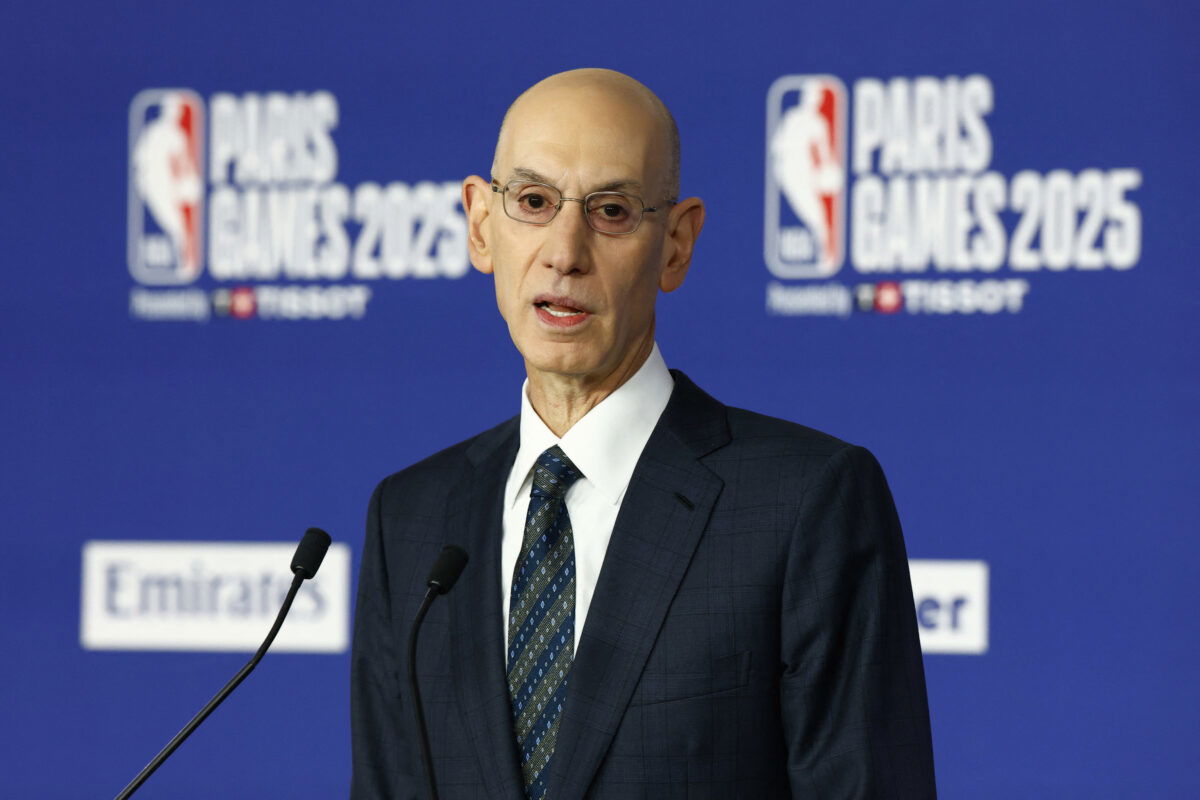
Reuters
[US, Mexico, & Canada customers only] Jan 23, 2025; Paris, FRANCE; NBA commissioner Adam Silver speaks before the Paris Games 2025 NBA basketball game between the San Antonio Spurs and Indiana Pacers at Accor Arena. Mandatory Credit: Stephanie Lecocq/Reuters via Imagn Images

Reuters
[US, Mexico, & Canada customers only] Jan 23, 2025; Paris, FRANCE; NBA commissioner Adam Silver speaks before the Paris Games 2025 NBA basketball game between the San Antonio Spurs and Indiana Pacers at Accor Arena. Mandatory Credit: Stephanie Lecocq/Reuters via Imagn Images
For months, NBA expansion felt like a done deal. With a massive new $76 billion TV deal kicking in and teams selling for billions, adding new cities like Seattle and Las Vegas seemed like a no-brainer. But this week, Commissioner Adam Silver threw a bucket of cold water on the whole idea, revealing a “very critical” problem that has put the brakes on the entire project.
Watch What’s Trending Now!
The issue isn’t a lack of rich owners or fancy new buildings. It’s local TV. “The one area where we’re seeing an actual decline is in local/regional television,” Silver said, a confession that sent a quiet shock through the league. The business model for many teams is built on these regional sports networks (RSNs), and that model is crumbling. Without a new way for fans to watch their local teams, Silver said, adding new ones just “doesn’t make any sense.”
Just look at the Lakers for proof. They have a massive $3 billion local TV deal with Spectrum, but as ESPN’s Brian Windhorst pointed out, that deal won’t last forever. “At some point, even for the Lakers, paying an exorbitant number for local games—that’s gonna run out,” Windhorst said. “When it does, the Lakers won’t be able to keep up.” Even with that huge contract, the Buss family was known for cutting corners, like lowballing Alex Caruso, to save money. And it turns out this was a significant factor behind the $10 billion sale.
ADVERTISEMENT
If the Lakers are feeling the pinch, what hope does a new team in a smaller city have? That uncertainty is playing out right now in Portland. The Trail Blazers are up for sale, and while local politicians are fighting to keep them there, Silver pointed out the obvious challenge: “The city of Portland likely needs a new arena.” The Moda Center is almost 30 years old, and asking a new owner to fund a billion-dollar stadium in a city with a struggling economy is a tough sell.
On top of the TV problem, there’s the simple economics of it all. As Silver noted, “For every team you add, you’re diluting the economics of the current league.” The current owners aren’t exactly eager to split the pie into more slices. Add in a new CBA that makes it harder to build dynasties—Silver joked he’s “not ready to declare we’re not gonna have dynasties. I’m sure Sam Presti isn’t ready to hear that”—and you have a recipe for risk. Why would someone pay billions for a new team if the rules make it harder than ever to build a winner?
Adam Silver: “I’m not ready to declare we’re not gonna have dynasties. I’m sure Sam Presti isn’t ready to hear that.”
pic.twitter.com/TsqFr4pBjy— Clemente Almanza (@CAlmanza1007) July 16, 2025
ADVERTISEMENT
It’s this tangled mess of issues that has forced the league to slow down. Silver announced that the league will now begin an “in-depth analysis” of expansion, calling it a “significant step” but also admitting it’s just “day one” of the process. The dream of new NBA teams isn’t dead, but it’s definitely on hold. And as it turns out, the shaky economics of expansion aren’t the only fire the commissioner is trying to put out.
ADVERTISEMENT
The Achilles Heel of the NBA and Adam Silver’s AI plan
What is going on with the NBA’s biggest stars? The 2024-25 season was brutal. It felt like a curse; multiple superstars went down like brown leaves in autumn, with a torn Achilles: Damian Lillard, Jayson Tatum, and, in the most gut-wrenching moment of all, Tyrese Haliburton in Game 7 of the NBA Finals.
So, what gives? Is it the 82-game schedule? The back-to-backs? The AAU circuit burning kids out before they even get to the league? Adam Silver has heard it all. And he’s not just shrugging it off. “We had already convened a panel of experts before Tyrese’s most recent Achilles rupture,” Silver revealed, his tone serious. “We had seven this year. We had zero last year under the exact same circumstances. The most we’ve ever had in a season is four.”
Top Stories
A’ja Wilson, Bam Adebayo Issue Strong Statement Against Rachel Nichols’ Question About Couple’s Privacy
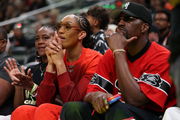
Caitlin Clark Surpasses LeBron James, Stephen Curry With 136,000 PSA Announcement
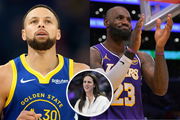
Who Is Steven Adams’ Girlfriend Kayla? Everything to Know About Rockets’ 6’11 Star’s Romance Life
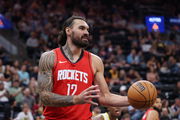
NBA World Turns On Victor Wembanyama After Subtle Dig at Shai Gilgeous-Alexander, OKC
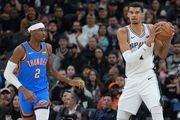
Respect Pours In for Shaquille O’Neal, Charles Barkley After $200,000 Announcement
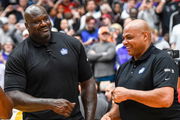
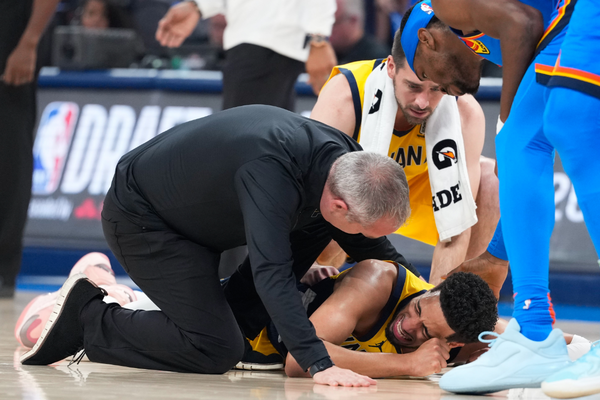
Imago
Jun 22, 2025; Oklahoma City, Oklahoma, USA; Indiana Pacers guard Tyrese Haliburton (0) reacts after suffering an injury during the first quarter against the Oklahoma City Thunder during game seven of the 2025 NBA Finals at Paycom Center. Mandatory Credit: Kyle Terada-Imagn Images
The league’s solution sounds like something straight out of a sci-fi movie: they’re turning to artificial intelligence. “I’m hopeful that by looking at more data, by looking at patterns… the ability with A.I. to ingest all video of every game a player’s played in to see if you can detect some pattern that we didn’t realize that leads to an Achilles injury,” Silver explained. “We’re taking it very seriously.”
ADVERTISEMENT
The vision is ambitious, to say the least. But Adam Silver and the league seem committed to it. They are working with researchers at Stanford University to build an AI that can learn each player’s unique physical signature. What this will essentially do is flag even the tiniest of changes in movement or recovery time that could signal an impending disaster. It’s a high-tech attempt to see an injury coming before it happens, but overall, it will give teams a chance to intervene with rest or adjusted training.
Is it a long shot? Maybe. But the league is desperate, and some of its sharpest minds are on board. Spurs’ very own Gregg Popovich, a pioneer in player management, gave it his blessing. “If this keeps our best players healthy, I’m all in,” he said. For a league that lives and dies by its stars, keeping them on the floor is everything. The turn to AI is a Hail Mary, an admission that the old ways aren’t working. The only question left is: will it work?
ADVERTISEMENT
ADVERTISEMENT
ADVERTISEMENT
ADVERTISEMENT

